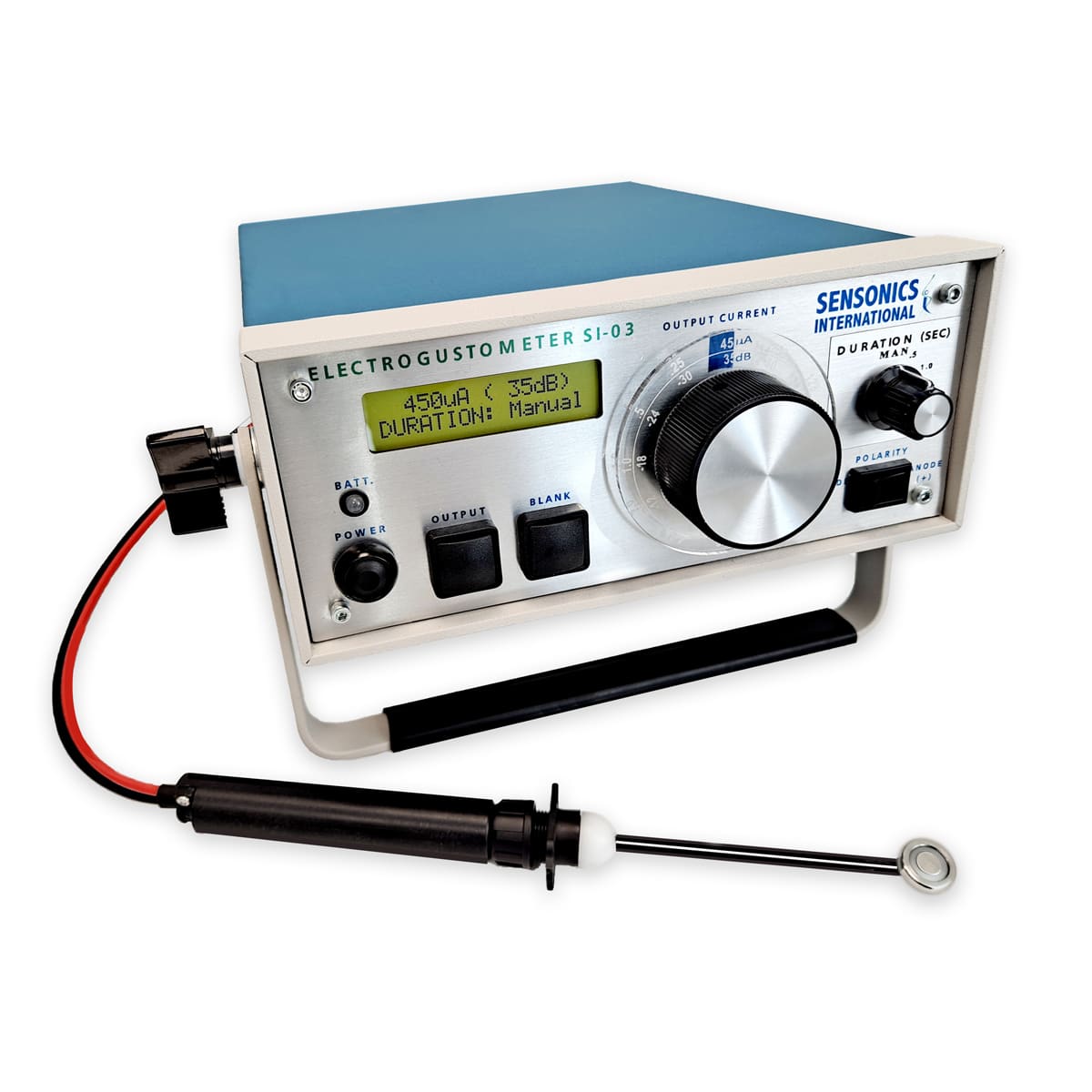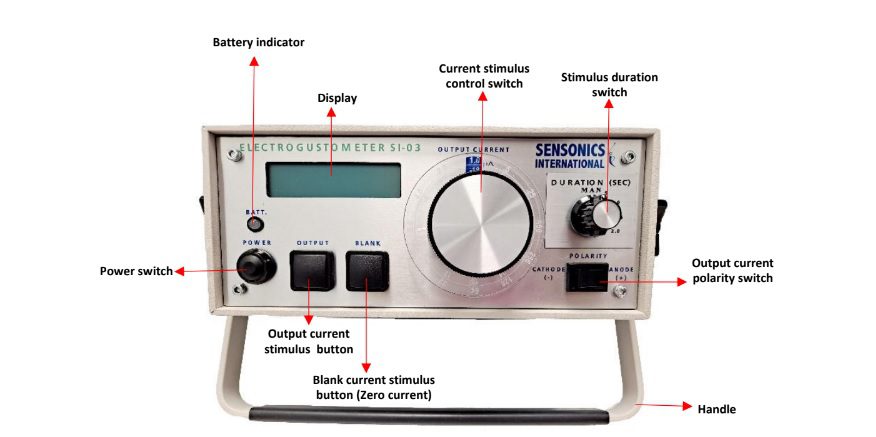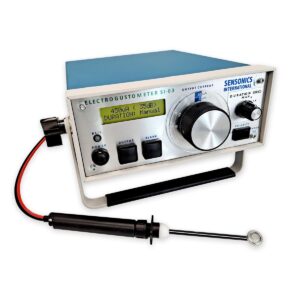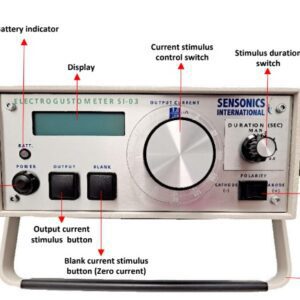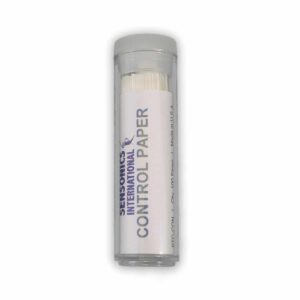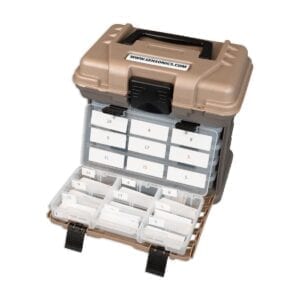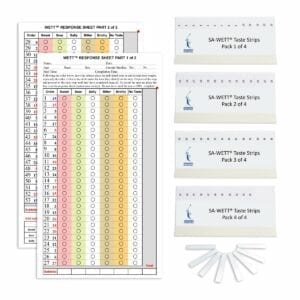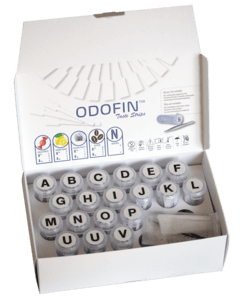Electrogustometer SI-03
Original price was: €6.514,00.€6.250,00Current price is: €6.250,00. excl. VAT
This electronic gustometer (Sensonics Electrogustometer SI-03) sets the world standard for electrogustometry. It provides an accurate and rapid means for assessing the overall taste function.
This electronic gustometer will be delivered with manual, 50 scoring sheets, 3 reusable electrode probes, (10) AA batteries, and an external battery charger.
This electronic gustometer (Sensonics Electrogustometer SI-03) sets the world standard for electrogustometry. It is produced by Sensonics (USA) and it provides an accurate and rapid means for assessing the overall taste function.
This electronic gustometer will be delivered with manual, 50 scoring sheets, 3 reusable electrode probes, (10) AA batteries, and an external battery charger.
Description electrogustomer
The Sensonics’ SI-03 Electrogustometer is designed to test the gustatory nerves by producing weak electrical currents in a logarithmic series that can be precisely controlled. The value of the electrogustometer is that you can test each nerve (left and right) separately. The device produces a constant stimulus regardless of different tongue resistances that may be encountered, i.e., it is a sophisticated “constant current” device. The electrode used with this product is a unique design not available on any other electrogustometer. It more closely imitates placing a food item on a small region of the tongue to produce a sensation. Differences in the sensitivity of different lingual regions can easily be assessed with the SI-03. Safeguards against poor connections are built into this electrogustometer. Thus, a high tone is sounded when the stimulus button is pressed if the electrode is not touching the tongue’s surface appropriately, or if a wire is broken or the unit is malfunctioning. A lower tone occurs when either the stimulus or the blank button is pushed to signal to the subject the presence of the stimulus during testing.
Does the electrogustomer evaluate taste qualities?
The electrogustometer does not evaluate taste qualities separately (such as bitter, sweet, salty, sour and umami), but provides a general assessment of taste function. It produces a slight tingling sensation, although in some cases a bitter/sour/salty sensation can be perceived because the current drives sodium ions to the taste buds. Because all taste qualities are found on all parts of the tongue (except the middle, which has few taste buds), the electrogustometer probe cannot test for different tastes. By placing the probe on certain parts of the tongue (regional stimulation), it is not possible to draw conclusions about which tastes are tasted or not. The value of the electrogustometer is that you can test each nerve (left and right) separately, it provides an accurate and rapid means for assessing the overall taste function. For a complete test of taste, the test must be performed on the left and right sides of the anterior and posterior tongue.
Test procedure electrogustometer
Although the SI-03 Electrogustometer is amenable to any number of psychophysical procedures (e.g., signal detection analysis, method of limits, method of constant stimuli, cross-modal suprathreshold scaling), we recommend, for clinical purposes, measuring detection thresholds using the two-down one-up forced-choice single staircase procedure. Staircase procedures have been employed for establishing thresholds for a wide range of sensory systems, including taste and smell. The twodown one-up paradigm converges at a 70.7% correct response level. Use the stimulus-response forms for the staircase procedure.
Discrete stimulus pulses can be presented ranging from 0.5 sec to 2 sec duration at currents ranging from -30 dB (.25 μA) to 35 dB (450 μA) in 12 total steps. For most applications, be sure that the stimulus duration is set at 0.5 sec and the output polarity switch is set to the anode. After the electrode is appropriately placed on the tongue and located accurately by the examiner, the examiner should initiate a trial at the 8 μA (0 dB) current level step.
The subject is asked to signal which is stronger, the first or the second, by showing it with their other hand. The subject must respond first or second even if no stimulus is perceived (i.e., the test is forced-choice).
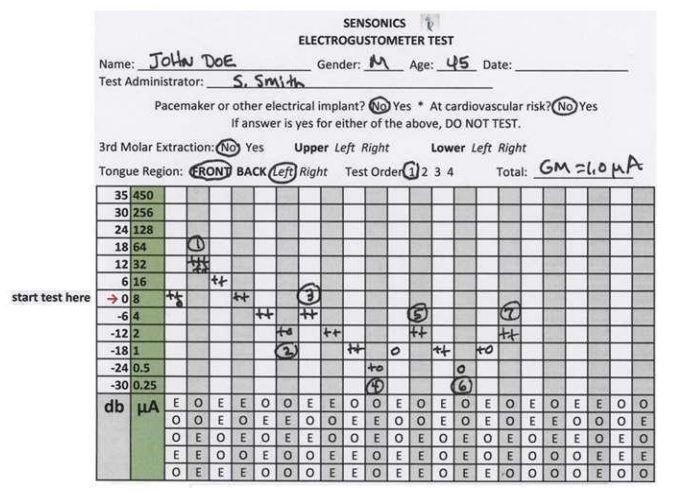
Features electronic gustomer Sensonics
- 12 selective constant current stimuli
- 5 variable time durations
- LCD illuminating current and duration display
- Low battery indicator
- A single concentric electrode with selectable polarity
- Automatically detects electrode disconnection in the circuit
- Option to select anode or cathodal current
- Batteries are replaceble by customer using dry cell AA lithium or alkaline batteries
Electrogustometry: validation of bipolar electrode stimulation
Electrogustometry (EGM) is a practical way to test taste. It is typically performed using unipolar electrodes. In the following publication you can read more about the validation of the electrogustomer:
https://pubmed.ncbi.nlm.nih.gov/36960972/
Abstract
The asbtract from this publication is as follows:
We compared, using a repeated measures counterbalanced design, anodal thresholds from a unipolar electrode to those of a unique bipolar electrode in which the anode and cathode are contiguously located. Both sides of the anterior tongue were assessed in 70 subjects, as were the effects of age and sex. Nonparametric analyses were performed. The median threshold of the bipolar electrode’s central disk (2.49 µA) did not differ from that of the unipolar electrode (2.96 µA) (P = 0.84). On average, older persons exhibited higher thresholds. No significant sex or tongue side effects were evident.
Interestingly, when the annular (donut-shaped) bipolar electrode served as the anode, the threshold was higher than that of the other electrodes (5.19 µA; Ps < 0.001). This conceivably reflected lessened summation of activity among adjacent afferents and partial sampling of tongue regions with fewer taste buds. Correlations among all EGM thresholds were nominally higher for women than for men, ranging from 0.83 to 0.85 for women and 0.54 to 0.67 for men; all Ps < 0.001.
This study validates the use of a bipolar electrode for assessing taste function, averting movement of current through nontaste-related tissues and making such testing safer and more practical.
Safety and warnings
The Electrogustometer has been tested and found to be in conformity with standard IEC/EN60601-1 edition 3.1.
The Electrogustometer has been tested and found to be in conformity with standards of EMC requirements EN 60601-1-2:2015 and FCC CFR 47, Part 15, subpart B:2017, Class B.
The SI-03 Electrogustometer has been designed with the utmost safety possible. Thus, it does not connect to any outside voltage source and uses a series of AA batteries to produce its stimuli. Moreover, the amount of current is confined to very low μA levels that are detected primarily by taste afferents. Such currents should only be presented to regions of the oral cavity.
This is a research use only device.

